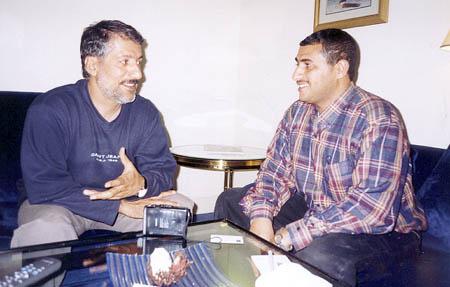Objectives of the U.S. War against Terror (Part 4 of 10) [Archives:2002/02/Law & Diplomacy]
Ahmad M. Abdulghani
Chairman of the al-Jazeera & al-Khaleej Center for Studies
In the second half of the 2nd century, the United States underwent several conventional wars, which were directly and indirectly employed to serve the US top policies. The following is an extract of those wars:
Korean War
The Korean war broke out in 1950. This war was the first war fought by the USA against the USSR. Indeed, the war was replete with military lessons owing to the continued confrontations between two different kinds of warplanes.
It was a real test for two different technologies, as well as the tactical and social aspects related to war.
Although the inter-Korean war ended unresolved in July 1953, more than 25 thousand Americans were killed and 115 injured in it. Besides, the USA lost about $ 22 billion during this war.
Vietnam War
The first Vietnamese war ended in 1954. The USA and South Vietnam refused to sign the final statement stipulating that Vietnam would be reunited following a general election scheduled for 1956. The abstention of the USA from signing the agreement wrapped its intention to spark a new war, especially as USA maintained strong military presence in South Vietnam. Later, the United States sent 550 thousand soldiers to take part in the second Vietnamese war which outburst in 1963 and lasted for 8 years.
Arab-Israel Conflict
The US intervention in Lebanon mid-1958 for withstanding Abdulkareem Qasem revolution in Iraq was the first in-field application for Eisenhower Principle. Indeed, the anti-Arab wars carried by Israel were basically masterminded by the Americans. The July War in which Israel occupied the West Bank, Gaza strip, the Golan Heights and Sina Desert is just an example of how instrumental the US support of the Hebrew state was in winning this war. Similarly, the USAtook part in the October 1973 War politically and militarily. It also provided the Israelis with the important intelligence about the Arab armies. Within the same context the USA had a hand in the Israeli invasion of southern Lebanon in the 1980s and the bombardment of the Syrian missile bases in Beka’a.
First Afghan War
After the USSR forces invaded Afghanistan in January, 1980. the United States generously supported the anti-Soviet resistance in Afghanistan which eventually forced the Soviets out of Afghanistan in 1988. The USA managed this war in ways that deplete the Soviet capabilities thorough taking advantage of the religious dimension of this war, as many Islamic countries supported the Afghans.
Iraqi-Iranian War
The time the war in Afghanistan was going on, the region was also undergoing another fierce war between Iraq and Iran. The USA played a key role in this war which lasted for 8 years within the context of a double-edged political game that substantially weakened the capabilities of all the countries of the regions and paved the way for the US military presence in the region, as well.
Second Gulf War
The US-led war to expel the Iraqi invasion forces from Kuwait involved more than half million soldiers. Further, the alliance forces swarmed the regions with their military fleets and bases. Broadly speaking, the United States along with the allied forces basically aimed at the destruction of the Iraqi military capability so as to ensure that no Arab state can threaten the Israel’s national security and so as to keep the countries of the region under its mercy. This may interpret why all these countries had gathered in no similar manner but to that made against Mohammed Ali Basha and his development project.
Small Warfare
The United States has had a hand in other wars, such as the Indo-Pakistani war, inter-Yemen wars, inter-Kurdish wars both in Iraq and Turkey, as well as the Indonesian and Philippines internal conflicts.
——
[archive-e:02-v:2002-y:2002-d:2002-01-07-p:./2002/iss02/l&d.htm]


